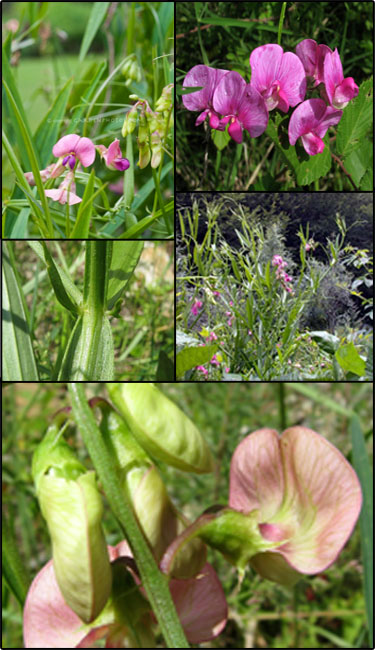Flat pea (Lathyrus sylvestris)
 Common Names: Flat peavine
Common Names: Flat peavineDescription: Produces chemicals which are toxic found within the seeds.
Habit: Climbing; perennial; herbaceous; ranges from 6-7 ft; normal range of 18-30 in; dense vegetative mat.
Leaves: Composed of two long, narrow leaflets with parallel veins; bears a tendril that extend from the center of leaf.
Stems: Leaf-like appendages (winged).
Flowers: Deep pink to reddish brown in color.
Fruit and seeds: Round and black in color, borne in a pod 2-3 in long, tapered at both ends, mature fruit are yellowish legumes.
Habitat: Found in fields; areas of human activity such as roadsides and wooded areas.
Reproduction: By seeds dispersal is short range.
Similar species: When flowering can be easily confused with species of Crownvetch (Coronilla spp.), Vetch (Vicia spp.), and Violet (Viola spp.). Also similar to Perennial/Everlasting Pea (Lathyrus latifolius).
Monitoring and rapid response: Hand-pulling; mowing. Credits: The information provided in this factsheet was gathered from the Natural Resources Conservation Service, the USDA PLANTS Database and the University of Michigan.
Individual species images that appear with a number in a black box are courtesy of the Bugwood.org network (http://www.invasive.org).Individual photo author credits may not be included due to the small display size of the images and subsequent difficulty of reading the provided text. All other images appear courtesy of Google (http://images.google.com).
